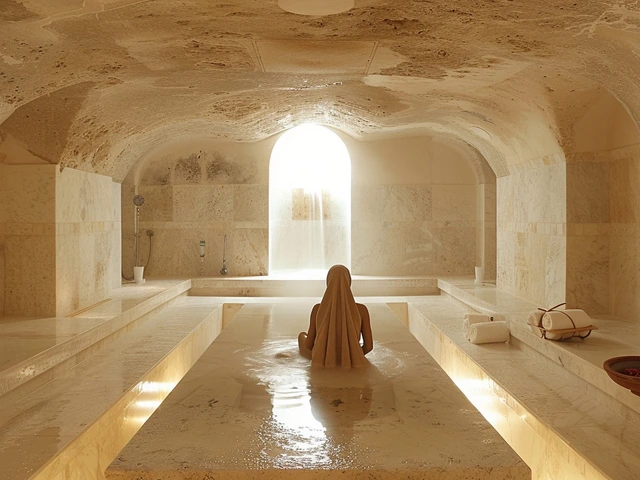
Unlocking the Mysterious World of Craniosacral Therapy
Delving into the world of alternative medicine, we tend to stumble upon therapies and practices that make you pause and think, "What on earth is that?" Among this conglomerate of modalities that challenge our comprehension towards health and healing, Craniosacral Therapy stands out prominently for its intriguing name and unique approach to wellness. For the uninitiated, the name itself might seem to belong to an esoteric branch of medicine, inaccessible and mystifying. Yet, getting to know it better, you'll surprisingly find it to be a gentle, non-invasive form of therapy that has a myriad of potential benefits to offer.
The Foundations of Craniosacral Therapy
We all have our unique health stories that lead us to explore different avenues of healing. I was led to Craniosacral Therapy on my quest to address a lingering tension headache that seemed to have become a permanent guest. Having tried a plethora of traditional and modern treatments with minimal success, I stumbled upon this gentle hands-on therapy. But before I share my own experience, let us first imbibe some knowledge about the therapy itself.
Craniosacral Therapy, often abbreviated to CST, is based on the keen observation and profound understanding of the human body's structure and functioning by Dr. William Garner Sutherland in the early 1900s. Understanding the foundations of CST requires appreciating the continuity and integrity of the body's connective tissue framework, ranging from your head (cranium) down to your spine and sacrum, hence the name, Craniosacral.
The Essence of Craniosacral Rhythm
Unlike Midas, everything Dr. Sutherland touched didn't turn into gold; instead, he noticed subtle movements, rhythmic undulations, suggesting the presence of a vital life force. This palpable rhythm, identified as the craniosacral rhythm, is intrinsic to life, much like our heartbeat and respiratory rhythm, but it is much subtler. The delicacy of these rhythms might make us oblivious to its existence, but the tale of my persistent headaches is a testament to their undeniable presence.
Riding the Wave of Therapeutic Touch
Before we consider Craniosacral Therapy as a magic wand (and why not, we all love a bit of magic in our lives!), it's crucial to understand the role of the therapist in this setting. Unlike other forms of bodywork that apply varying degrees of pressure or manipulation, the touch used in CST is light, almost feather-like, usually no heavier than the weight of a nickel. And it's not just the delicacy of the touch that is paramount; it's the perception and sensitivity behind that touch - the therapist tunes into the rhythm, flows along, identifies the disruptions, and gently encourages the system to restore its balance. Now, that's what I call riding the wave!
Unfolding the Health Benefits of Craniosacral Therapy
The benefits ascribed to CST are not just skin deep; they range across the body's dimensions, physical, mental, and emotional. From a physical perspective, CST can help address an extensive array of conditions, including chronic pain, migraines, TMJ syndrome, and post-surgical recovery. It is exceedingly gentle, making it a viable option for newborns, the elderly, and those with fragile constitutions.
On a psychological level, it can assist in managing stress, anxiety, depression, and even PTSD. The fascinating part is: as your body relaxes into the treatment, you begin to enter a 'theta' state or the body's optimal healing state, much like the tranquil stillness at the eye of a storm, making you feel renewed and rejuvenated. It was in one such peaceful treatment session that I finally bid farewell to my unwelcome guest, the insistent headache!
Demystifying the Practice: A Craniosacral Therapy Session
For the curious cats reading this and contemplating a CST session, let me walk you through what a typical session looks like. It starts with you lying fully clothed on a massage table. The therapist places their hands gently on your body, tuning in to your craniosacral rhythm. They keenly perceive subtle fluctuations in this rhythm, identify areas of tension or restriction, and use gentle hand placements and movements to encourage your body's natural healing mechanisms. There's no one-size-fits-all approach in CST; every session is uniquely tailored based on the individual's needs and responses.
Incorporating Craniosacral Therapy into Your Wellness Routine
One of the most exciting parts about CST is how seamlessly it can be integrated into your existing wellness routine. The key is consistency, and you should expect some time before you see significant changes, much like cultivating a lush garden. And as you peacefully lie down on that table, bidding adieu to clenches and tensions, remember to inhale faith and exhale fear, as you embark on your delightful journey towards holistic health!
In our fast-paced world where medicines and treatments are mostly about immediate results and quick fixes, Craniosacral Therapy invites us to slow down, tune in, and patiently foster our health from within. So, whether you're struggling with chronic ailments, seeking stress relief, or simply trying to achieve an enhanced sense of well-being, introducing Craniosacral Therapy into your life can be a transformative experience!




